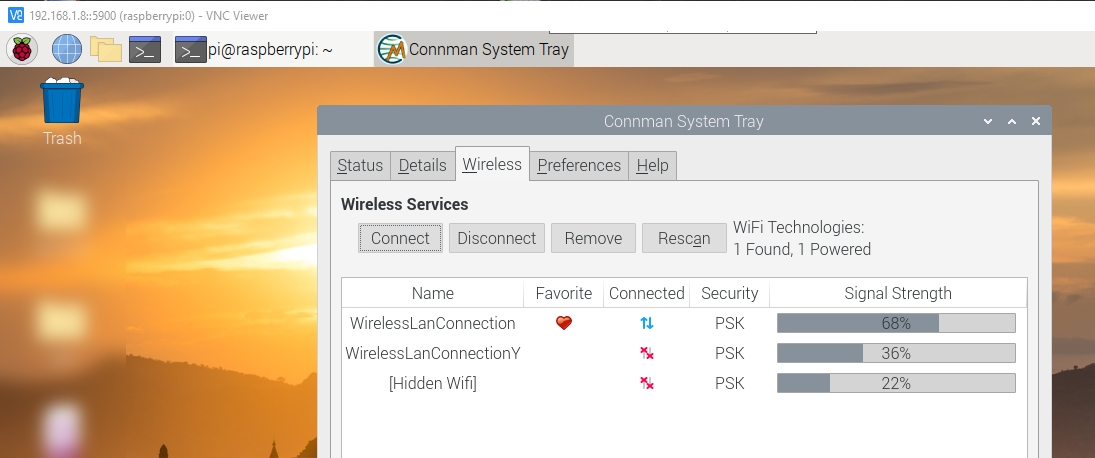
To boot from a USB drive follow these instructions:
Hold Volume Up and the Windows button below the screen (not on the keyboard) and press the power button once.
Release both keys once the Lenovo logo pops up
To boot into APX mode follow this:
Hold Volume Up and Rotation lock button (right side/edge) and press the power button once.
Once Caps Lock lights up you can release the buttons.
Boot Linux on your Lenovo Ideapad Yoga 11.
Progress has been made on the Lenovo Ideapad Yoga 11. It is now possible to boot Linux on the device.
None of the Open Surface RT members owns a device like this. Testing was done by @not_important and @lgibson02. We have had to rely on their feedback if something works or not, or which workarounds are required for what. Thanks for the help.
Screen & HDMI
WiFi
Touchscreen
Touchpad
Keyboard (without FN functionality)
USB ports
Micro SD card
TODO: still need to be checked if they work.
Modules are here (our file mirror). Too big for GitBook.
zImage and device tree can also be downloaded from our file mirror.
To get started, make sure test signing is enabled. Visit Secure Boot for instructions on how to do it.
You cannot apply Yahallo (Disable secure boot) on this device. It's Surface RT & Surface RT 2 only, as off August 2021.
To boot to a desktop Linux environment, you need to put a Linux Distribution onto your SD card. RPI OS is tested and works.
You also need to prepare a FAT32 formatted USB drive. Visit FAT32 isn't FAT32 for possible issues and instructions when formatting.
Get the Golden Key USB setup from here, and extract the given ZIP to your USB drive.
Take the zImage file from Prebuilt binaries above, copy it to your USB drive and rename it to boot.efi.
Take the tegra30-lenovo-ideapad-yoga-11.dtb from above and copy it to your USB drive.
As disabling secure boot isn't supported on this device, the Golden Key exploit needs to be used to enable booting a Linux kernel. The Linux kernel's EFI Stub has a security check built-in that would normally prevent us from loading a custom device tree. This security check has been patched. This means we require to use the Golden Key USB setup.
The WiFi driver requires being a module, as the built-in version would access a configuration file on the root filesystem, before the root filesystem is available. There are many other modules which is rather unimportant.
Copying the modules and the configuration file may be an issue on Windows as the root filesystem is likely ext4. Feel free to extract the ZIP onto the root filesystem and create the configuration file once Linux runs. All of these files are not required for booting. For the changes to take affect you may need to reboot.
To install the modules, extract the modules ZIP file from above onto your root filesystem. The lib folder of the ZIP and the root filesystem should merge.
To get WiFi working you need to put the already mentioned configuration file onto your root filesystem too. The file path is integrated into the filename of the code block at the top.
This configuration file may contain bad parameters as the values were taken from two different devices. It is just enough to get WiFi working.
Additional steps may be required to get WiFi working. See the message bellow for possible steps.
@lgibson02 please test if it's working for you by placing the following file (config file above) in
/lib/firmware/brcmYou can also use connection manager with the frontend same as in the screenshot if you want:sudo apt-get install connmansudo apt-get install cmstAnd then just runcmst
After you inserted the SD card and the USB drive into your device, boot from your USB. Use the instructions here.
If you have done everything correctly RPI OS should show up after some time (up to 60 seconds).
Have fun 🙂
If you have trouble, feel free to ask for help on our discord server.
Compiling the Linux kernel requires Linux installed on your system.
We upload all of our changes to our OpenSurfaceRT/grate-linux repository. Use the lenovo-ideapad-yoga-11 branch.
To download run git clone https://github.com/Open-Surface-RT/grate-linux.git -b lenovo-ideapad-yoga-11.
We provide a defconfig for this device. Simply run make ARCH=arm lenovo-ideapad-yoga-11_defconfig.
Compiling is as simple as running make ARCH=arm CROSS_COMPILE=arm-linux-gnueabihf- -j<value> where value is the number of CPU cores you have available. Depending on your processors speed, the build takes from a handful of minutes to 10 minutes or longer.
If the build complains that arm-linux-gnueabihf-gcc was not found, install the compiler. For Ubuntu the install command looks like this: gcc-arm-linux-gnueabihf.
The output kernel image (zImage) is arch/arm/boot/zImage.
The output device tree is arch/arm/boot/dts/tegra30-lenovo-ideapad-yoga11.dtb.
Just put the zImage onto your USB drive and rename it to boot.efi. The device tree needs to be copied over too. No need to rename it.
To get your modules run make ARCH=arm CROSS_COMPILE=arm-linux-gnueabihf- -j6 INSTALL_MOD_PATH=module_out/ modules_install. The modules are put into the module_out/ folder with the correct directory structure. Just copy over the lib folder to your root filesystem. If you chose to compile the kernel yourself you need to use these modules.
